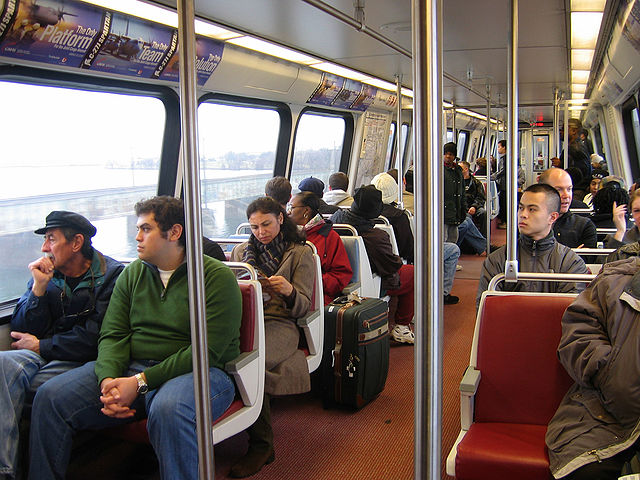Americans drive a lot. About 90 percent live in a household with a car. Among adults, 89 percent are licensed to drive. Overwhelmingly, most people get to work by driving alone.

But those statistics obscure some important nuances. A new study by Ralph Buehler and Andrea Hamre in the journal Transportation looks at Americans who are "multi-modal" -- people who get around not only by driving but also by walking, biking, or taking transit.
A majority of Americans don't use a car for every trip: According to National Household Travel Survey data from 2001 and 2009, 65 percent of Americans report taking at least one walking, biking, or transit trip each week, in addition to driving. Of these, a wide majority -- 80 percent -- reported that walking was their only other mode of travel.
Meanwhile, 28 percent of Americans typically never make any trips outside of a car -- they're "mono-modal." And about 7 percent don't drive at all in a typical week.
Rather than classifying drivers, transit riders, or cyclists as distinct groups, the authors suggest thinking about people's travel behavior along a continuum, from those who drive exclusively to those who never drive, with many gradations in between.
Buehler and Hamre found several relationships between demographics and the "multi-modality" of American households, some more obvious than others. There's no definitive explanation for some of these correlations, but they're interesting food for thought. Here's a look.
1. Age
People age 16 to 24 are 50 percent more likely than people over 65 to take at least one non-driving trip per week and are 3.4 times more likely to be completely car-free during a typical week.
2. Income and education
Surprisingly, respondents in the lowest quarter of the income spectrum are about 9 percent less likely to take a single non-driving trip during a typical week, compared to people in the two middle quartiles. At the same time, the poorest 25 percent of Americans are also 7 percent more likely to be totally car free during a typical week than middle-income Americans.
Meanwhile, the wealthiest quartile are 19 percent more likely to be multi-modal and 22 percent more likely to be car-free in a given week than middle-income people. The researchers hypothesize that more affluent people might be better able to afford to live in walkable communities that provide options other than driving.
People with less education are also more likely to drive for all their trips. People with some education beyond high school are 39 percent more likely to take at least a single non-driving trip per week and 35 percent more likely to be completely car free than people who have no education beyond high school.
3. Employment status
People with jobs are 16 percent less likely to have taken at least one walking, biking, or transit trip over the past week, and 54 percent less likely to make every trip without driving, than people without jobs.
4. Gender
Men are about 12 percent more likely than women to have taken a non-car trip in the last week and 40 percent more likely to go without driving at all. This could be explained by the fact that men are more likely to bike for transportation. Another factor could be women's typically larger role in childcare duties, which tend to demand more driving.
5. Parenthood
Households with children are 22 percent less likely to refrain from driving than couples without children.
6. Neighborhood
People who live in neighborhoods with a population density above 10,000 per square mile (a threshold resembling the densest parts of Detroit and Cleveland) are 17 percent more likely than residents of more spread-out areas to take one non-driving trip per week and 3.5 times more likely to be completely car free.
"Dense areas typically have higher levels of traffic congestion along with car parking that is more expensive and in shorter supply, all of which make car use less attractive," the authors reasoned.
People who live in metro areas with rail were also less car-dependent that those who live in areas without rail. They were 6 percent more likely to take one non-driving trip per week and 72 percent more likely to be totally car-free during a typical week.





